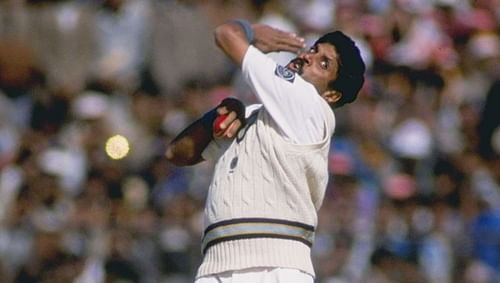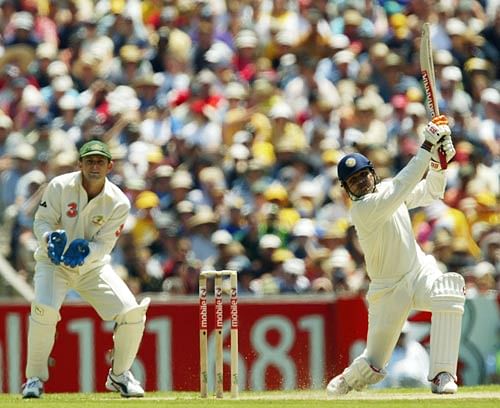
Boxing day match - What does history indicate about India's performance at the G?

Come the 26th we all gear up for the much awaited ‘Boxing day’ bout. What can one expect of the big day? The prospects don't look very promising for the touring team. The G as it is affectionately called, Melbourne Cricket Ground has been a happy hunting ground for the Aussies in the last decade. No Asian team has beaten them at the G in last 3 decades.
You need to go all the way back till 1981 when a controversial pitch contributed more than the the touring team to the victory. You don't see too many matches where Lille, Alderman and Thomson bowl 90 overs between them for no wickets. A team effort took Pakistan to dominating score of 500 without a single centurion. After which, Imran Khan, Sarfraz Nawas and Iqbal Qasim combined to destroy Australia. Pakistan romped home to a huge victory.
The men in blue can look for some inspiration from the same season of 81, when a victory was engineered by a masterclass by Kapil Dev.
With Australia chasing a paltry 143 for victory, India had lost Kapil Dev’s bowling services on the fourth day due to a thigh strain. The fact that he had batted with a runner only raised more doubts on him bowling in the forth. An inspired effort from Karsan Gharvi had left Aussies at a precarious 24/3 at the end of the forth day.
A charged up Kapil came on, bowled unchanged for 16 overs and took the 5 of the remaining 7 wickets to fall on the final day was nothing short of a cinematic comeback. Ironically, this match was almost called off as Gavaskar staged a walk off thankfully intervened by the then team manager Shahid Durrani.
A WALK DOWN THE MELBOURNE MEMORY LANE:
Since 1981, India has had 6 chances at the Gabba and never come out successful even once. The first of which India should have won in the 85 series. India held the upper hand for most of the match and to tell that we were thwarted by weather is nothing but a lame justification to console.
Australia 9 down with a slender lead of 49 were allowed to get away. With the Indians hesitant to attack, Allan Border scored a majestic 163 to stretch the lead to 125. India began the chase with sufficient warning about the weather and yet crawled to 59 off 25 overs, where Gavaskar, Vengsarkar and Mohinder Amarnath combined to score just 12 runs of 93 balls, before weather intervened to decide the issue. This, I can safely say, is the closest we have come to beating Australia at Melbourne.
The others can be classified into two major themes which Indian cricket have become accustomed with - An abject display or an ‘Oh So close’ defeat. The two games played in the 90’s needless to say fell in the abject display category.
1991, Bruce Reid brought in for Whitney proved to be the nemesis taking 6 wickets in each innings to lead Australia to a comfortable victory. Chasing 128 for victory, there was no dramatic comeback this time as the Aussies romped home with 8 wickets to spare. A series where the Indians were thrashed 4-0. The only highlights of the series being Ravi Shastri’s grinding double century at Sydney and Tendulkar’s twin hundreds at Sydney and a racy Perth wicket. This was Tendulkar’s debut series at Australia and he was already making a mark.
1999, bore all the hallmarks of a typical Indian test match in that period. One man scored a century in one innings and a half in the other only to watch his team being dismantled by the opposition. The entire series was such where India was thrashed 3-0 with no semblance of a fight. A series which involved the infamous LBW decision, Brett Lee making his debut, Agarkar stringing together a series of ducks and which sowed the seeds for Tendulkar to give up captaincy for Ganguly to take over. The only high point was the fact that two of the three tests went into the 5th day says a lot about India’s performance in that series.
2003, After Ganguly had taken over India had some encouraging performances overseas. One of the few times India went into a match abroad with the upper hand, and leading the series 1-0. Sehwag setup stage with a brutal 195 and India had Australia at their mercy. Only to throw it all away and collapse from a strong 300/3 to 366 all out.
Ponting scored his second double century of the series and Australian bowlers pushed home the advantage to square the series. The match which created a lot of furore for Tendulkar letting Ganguly ‘cover’ for him at the end of the third day’s play was also a part of the farewell tour for one of Australia’s best - Steve Waugh. The series ended with one of Tendulkar’s double centuries more famous for the discipline rather than flair. Again, a match in which India’s inability to knock out a team stood out.

2007, India seemed to be back to old ways, with twin collapses. Failed to reach 200 in either innings and was thrashed by a huge margin. A series marred by umpiring fiascos and the infamous ‘Monkeygate’ incident. Less said about the series the better.
2011, The tour opener after an abysmal England tour saw India restrict the Aussies under 400 and ended the second day at a strong position, at 214/3, though they lost Tendulkar in the penultimate over the day. Tendulkar, under the century of centuries cloud, had scored a quick and assertive 73 off 98 balls before being bowled by Siddle, a mode of dismissal the great man seemed to have taken a liking to.
That seemed to the turning point as India catapulted to lose their next 8 wickets for 70 odd runs. But the ‘Oh so close’ frustration which the Indian fans have unfortunately gotten used didn't end there. In the second innings, the Indians had the Australians on the mat at 27 for 4 only to let the noose lose as Australia recovered through Ponting and Mike Hussey. Add to that, the last wicket pair partnered to add 43 runs off no time was the sucker punch. India folded in the second innings to lose the test and went on to lose the series 4-0.
2014, the tour that mattered, was supposed to be one where India challenged Australia, which they did in the first test. India have an ‘Oh So close’ defeat followed up with an abysmal display. This series, dangerously, is bearing all similarity to the one in 2011.
MCG, AN AUSTRALIAN SAFEHOUSE:
In the last decade, there have been only two defeats for Australia at MCG, one at the hands of an inspired England and the other against a strong South Africa. One common theme between the two was the performance of the quicks in the two teams. The former was setup by James Anderson and Chris Tremlett combining to shoot Australia out for 98 and the latter by a Dale Steyn masterclass, where he picked up a 10 for.
Stretching it back to two decades, I can dig up only a couple more, again both of them plotted by the quickmen. Ambrose, Walsh and co-plotted a victory for the Windies in 1996. Dean Headley came up with a career best to stun Australia, as they lost 7 wickets for 30 runs, and helped England sneak behind the door to a 12 run victory and square the series 2-2. In case you haven't watched that match, do watch the cliffhanger here.
The G has given us so many moments - First ever Test, First ever ODI, the ugly underarm incident, 92 World cup finals, Muttiah Muralitharan being no-balled for throwing, and all the entertainment provided from Bay 13. Last year’s Boxing day Ashes saw a record attendance of 91 thousand. How will it fare this year?
Will India find answers to Johnson and co? Will Ishant Sharma be able to rediscover his Perth mojo? Will Bhuvaneswar Kumar be able to make it to the team? There are so many questions for India to ponder about.
But for the fans it all boils down to one key question - Will India find a solution to their chronic problem of not being able to close it out when it matters, with both bat and ball?